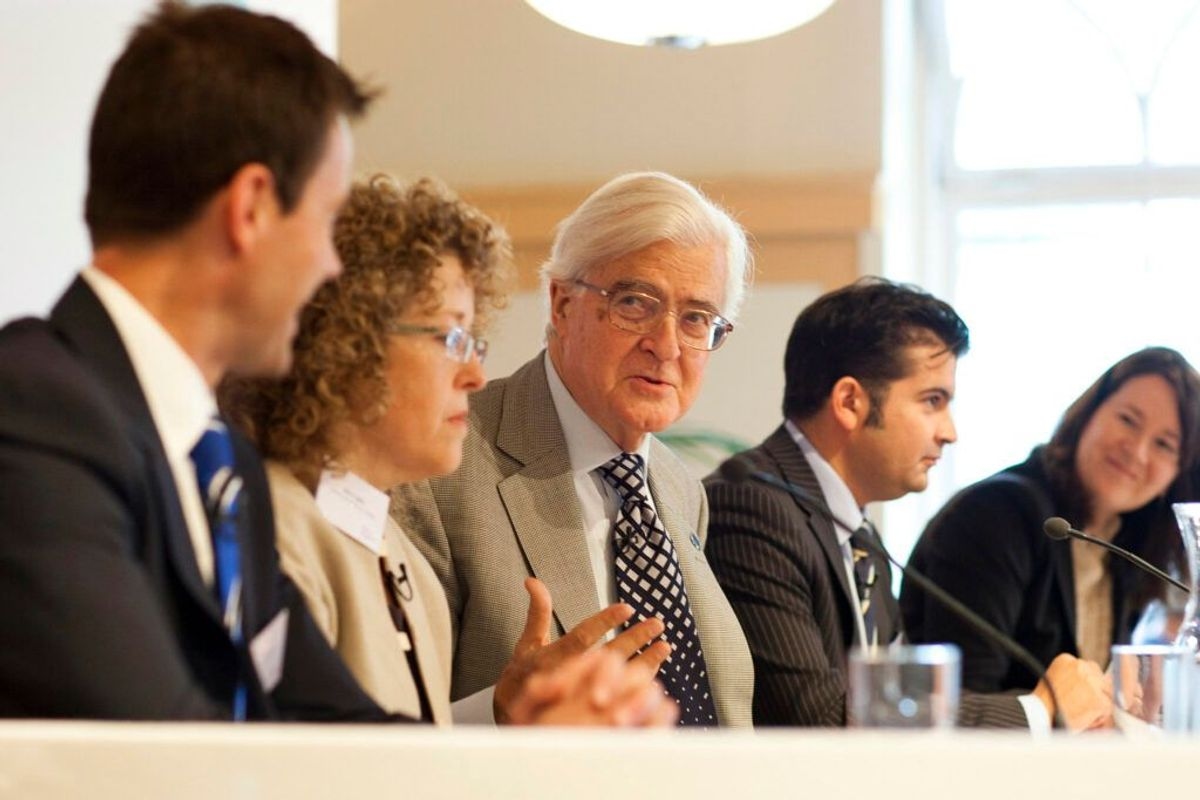
Kenneth Baker created probably the most important piece of post-war education legislation
Photo: Courtesy The Edge Foundation/Flckr
Why did Ken Baker create his reforms?
Soon after winning the 1987 general election, Margaret Thatcher asked Ken, now Lord, Baker to come up with a plan to refashion the education system.
He returned a month later with the bones of what was known originally as Gerbil – the Great Education Reform Bill – and finally the Education Reform Act.
The Education Secretary’s prescription for the perceived maladies of the time was to centralise the curriculum, decentralise budgets and give parents greater choice over their children’s schooling.
The intervening 35 years have seen 21 secretaries of state and plenty of changes to the educational landscape.
But the main edifice Baker created with the Education Reform Act (ERA) is substantially untouched, even if parts of it are hiding under a new coat of paint.
Arguably the element of the Act with the greatest impact was the introduction of the National Curriculum.
Why did Ken Baker create the National Curriculum?
Baker wanted to declutter the curriculum, to create a consistent and coherent system across the country so all children, regardless of background got a rounded education.
What was in Ken Baker's National Curriculum?
He demanded 10 subjects all the way up to 16, including technology, history, geography, foreign languages, art, music and sport.
Today, the National Curriculum structure remains almost fully intact apart from compulsory modern languages from 14-16 and history.
Despite the slight mutation of his curriculum Baker’s hope for consistency and coherency remains untouched. Indeed, even though academies do not technically have to teach it, many still do.
Before 1988, a child moving from Exeter to Newcastle may have entered a new school and been forced to restudy topics they previously looked at or take on a new topic with no grounding.
Since then, and still today, they can pick up pretty much where they left off.
How did Ken Baker hold schools to account and make parents more informed?
Accountability, diversity and greater parental choice were all tied into another crucial component of the Act - regular standardised testing or assessment with published results.
Those four Key Stages – at ages 7, 11 and 14, and 16 – have endured.
Some argue that the culture of competition they fostered pushed schools to improve educational provision and outcomes.
Others say they promoted teaching to the test over giving children a fuller education.
How did the Education Reform Act make schools more autonomous?
Baker decentralised power away from Local Education Authorities by handing control of budgets to headteachers and governors under the Local Management of Schools (LMS) section of the ERA.
To this day governing boards still have responsibility for school expenditure not local authorities.
Headteachers manage budgets on a day-to-day basis and are answerable to the board.
This unprecedented autonomy promoted a more market-based approach to education.
Debate rages around whether this widened the gap between well-resourced and under-resourced schools or encouraged efficiency and innovation.
Whichever side of the fence you're on, LMS undeniably increased parental involvement in their children’s education and created competition between institutions.
The enduring notion of parental preference for schools has influenced subsequent policies and shaped parent’s expectations.
Linked to the idea of decentralisation, marketisation and greater parental preference was the concept of Grant Maintained schools and City Technical Colleges - part of Baker’s attempts to elevate vocational and technical education - which were partially sponsored by the private sector.
These centrally-funded schools are the ancestors of today’s foundation schools and University Technology Colleges.
More broadly, they can be seen as precursors to academies.
How do we assess the legacy of Ken Baker's Education Reform Act?
The legacy of the ERA is complex and divisive.
Whether you think Baker’s reforms brought greater accountability and self-determination or that they promoted inequality and favoured competition over collaboration, there’s no denying their influence.
They have had global impact and continue to inform contemporary debate about the shape and purpose of education.
As with much of education, the time needed for any policy to take root is substantial.
Through a child’s 13 years in education, a lot can change.
Baker’s reforms focusing on standardisation, accountability and autonomy are the most recent substantial overhaul of education.
Their other aim, to raise the standing of vocational and technical education in a similar way to Germany, had been a long-held ambition for the sector.
The Advanced British Standard and the Baker Reforms' long shadow
Some 35 years on, Rishi Sunak is grappling with this same issue through his Advanced British Standard (ABS).
The ABS is trying to re-frame education to have a holistic, vocational and academic system for all post-16 students - in some ways, seeking to shake up an education landscape underpinned by foundations laid in the 1980s.
Who knows what will be written in 2058 about the impact of this latest round of reform.
Read More:
The 1963 Newsome Report: The lessons of education policy past
O-levels, GCSES. Teacher Assessed Grades & the gender attainment gap
Four decades on: What were the reasons for GCSEs?









